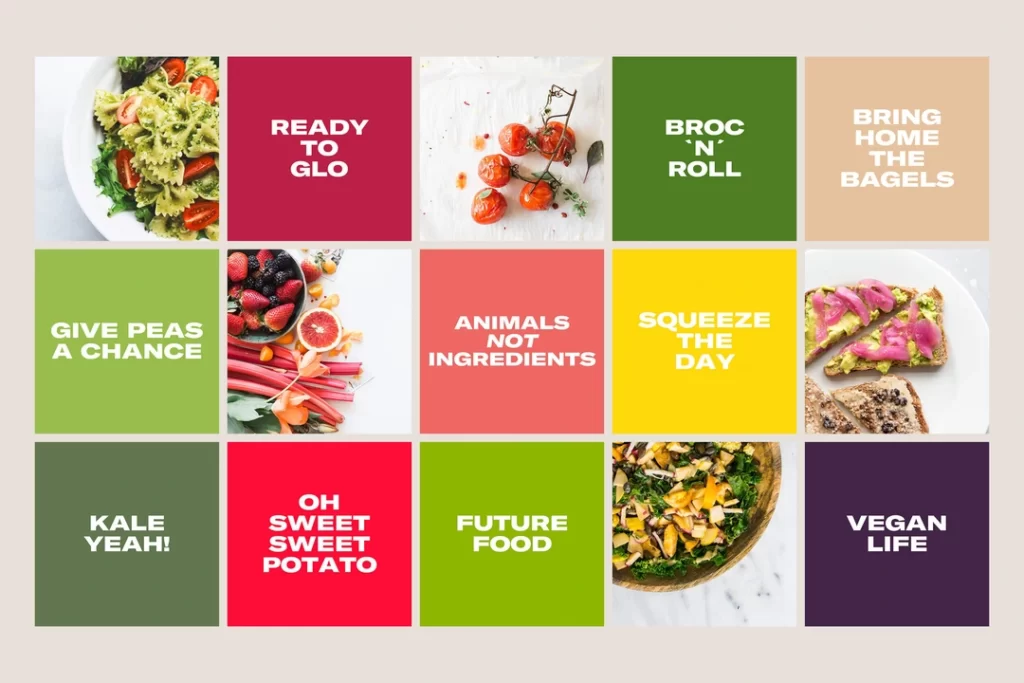Advertising and Marketing Basics: Beginner Introduction
The gods of advertising and marketing want you to believe it's all about flashy ads and clever slogans. They'd love you to think you need a huge budget and a degree from a fancy school before you can market anything.
But here's the truth: marketing isn't about mad men in skyscrapers. It's about telling your story to people who want to hear it. It's about listening to your customers and giving them something meaningful.
In this short guide, we'll cut through the jargon and myths. You'll learn the basic, foundational building blocks of advertising and marketing that can help any business, even if you're starting or operating on a shoestring.
This isn't about quick hacks or silver bullets. It's about timeless principles and strategies that can sustain real growth, not just a short-term bump. Armed with these fundamentals, you can craft a marketing plan tailored to your specific audience and goals.
Sound impossible? It's not. Many hugely successful marketers and businesses started small, just like you. They mastered the essential skills. And I'll show you how you can, too.
So leave your preconceptions at the door. It's time to discover advertising and marketing basics that work.
Table of Contents
What is Advertising?

Advertising refers to paid messaging to promote products or services. The goal is to inform potential customers about what you offer and persuade them to take action, like making a purchase.
Businesses use various advertising mediums to reach their target audience, including:
- Print ads (newspapers, magazines, brochures)
- Broadcast ads (radio, TV)
- Online ads (search ads, display ads, social media ads)
- Billboards and other outdoor ads
- Direct mail
Key benefits of advertising include:
- Increasing brand awareness and visibility
- Communicating your brand identity and value proposition
- Generating new sales leads and customers
- Expanding reach to new demographics and markets
- Amplifying word-of-mouth referrals
Well-designed ads capture attention with creative messaging and visuals tailored to your brand and audience. Most ads highlight a specific promotional offer or critical selling point about your product or service.
What is Marketing?

Marketing refers to strategies and tactics to promote a company and its products/services. The primary goal is to connect with consumers and drive profitable customer action.
Unlike advertising, marketing is a broader discipline which includes market research, product development, distribution, pricing, partnerships, public relations, customer service, and more. Advertising is one marketing communications tool.
Core marketing activities include:
- Market research to understand target audiences, trends, and demand
- Segmenting markets and selecting target demographics
- Positioning products/services based on competitive differentiators
- Setting pricing strategies to optimise profit margins and demand
- Distributing products through optimal sales channels
- Developing new products and product improvements
- Promotional activities like advertising, PR, incentives, and tradeshows
- Building strategic partnerships and affiliate programs
- Customer relationship management to improve satisfaction and loyalty
Skilled marketing maximises return on investment (ROI) by generating interest and sales most efficiently. This requires strategic coordination of various tactics over time.
10 Key Marketing Concepts
As a beginner, these foundational concepts will help you understand effective marketing:
Customer Needs and Wants
Marketing revolves around understanding customer motivations and desires. Needs are basic requirements like food, shelter, safety, etc. Wants are more specific demands shaped by preferences and interests.
Clever marketing matches company offerings to customers' needs/wants. The goal is to demonstrate how to deliver value and satisfy these requirements.
Market Segmentation
Segmenting markets divides consumers into groups with common needs/wants. This allows customised marketing tailored to different demographics, lifestyles, behaviours, etc. Targeting niche segments can be more profitable than mass marketing.
Marketing Mix
The marketing mix refers to the 4 Ps of marketing: Product, price, place, and promotion. This framework helps construct integrated strategies with suitable product offerings, pricing, distribution channels, and promotions.
Product Life Cycle
Understanding product life cycles is crucial for good marketing. The process includes five stages: development, introduction, growth, maturity, and decline. Marketing strategies shift based on the life cycle stage.
Positioning
Positioning involves defining how you want consumers to perceive your brand compared to competitors. Effective positioning carves out a distinct niche in the marketplace.
Customer Relationships
Building strong customer relationships increases satisfaction, loyalty, referrals, and retention. CRM techniques like onboarding, communications, service recovery, and loyalty programs help nurture relationships.
Branding
Branding builds a memorable, meaningful identity around your company and offerings. This includes branding elements like names, logos, slogans, designs, and experiences consistent with your core brand identity.
Consumer Behaviour
Studying characteristics like demographics, psychographics, behaviours, attitudes, and preferences provides insight into why consumers make specific decisions. This knowledge informs marketing strategy.
Competitive Analysis
Understanding the competitive landscape, alternative offerings, pricing, promotions, strengths, and weaknesses enables intelligent positioning and differentiation.
ROI and KPIs
Key performance indicators (KPIs) like revenue, leads, conversions, engagement, churn rate, lifetime value, etc., measure marketing return on investment (ROI). This accountability improves decision-making.
5 Types of Marketing

There are five main types of marketing, each with distinct goals and strategies:
1 – Product Marketing
This focuses on marketing an actual product or service. It highlights vital benefits, differentiators, and proof points and helps consumers understand the offering.
2 – Brand Marketing
Brand marketing builds awareness and loyalty for a company/product through consistent and compelling messaging. It develops strong emotional connections between brands and audiences.
3 – Direct Marketing
Direct marketing communicates straight to the consumer via channels like email, text, fliers, catalogues, etc. The goal is to generate an immediate response like a purchase, download, or account sign-up.
4 – Inbound Marketing
Inbound attracts customers by creating valuable content and experiences they find organically, like blogs, videos, tools, etc. SEO, social media, and content creation fuel inbound strategies.
5 – Outbound Marketing
Outbound marketing pushes messaging out to consumers via interruptive methods like TV ads, cold calling, junk mail, brochures, etc. It broadcasts outbound content to capture attention.
A strategic mix of these methods maximises reach and conversion across diverse audiences. Different strategies work at various marketing funnel stages.
The Marketing Funnel
The marketing funnel visualises the customer journey from initial awareness to becoming loyal brand advocates:
- Awareness: Customer realises they have a problem requiring a solution and discovers your brand.
- Interest: Customer research to learn more about your offering and value proposition.
- Evaluation: By comparing options, the customer assesses whether your product/service best meets their needs.
- Purchase: Customer decides to buy from your brand.
- Loyalty: Customer has a positive post-purchase experience, receives ongoing value, and becomes a repeat buyer.
- Advocacy: A satisfied customer refers others and becomes a brand promoter.
Marketers craft targeted strategies to guide prospects through each funnel stage. Top-funnel focus is awareness. Mid-funnel emphasises persuading consideration and evaluation. Bottom-funnel prioritises conversions and loyalty.
7 Ps of Marketing

Expanding beyond the original 4 Ps, the 7 Ps framework helps develop fully integrated marketing mixes:
Product – Developing the right product or service offering for your target market.
Price – Pricing strategies that balance profit goals and buyer willingness to pay.
Place – Distributing your product effectively via the best mix of sales channels.
Promotion – Promotional activities like advertising, PR, incentives, and events.
People – Frontline staff that interact with customers and impact experiences.
Process – Service delivery procedures and customer experience touchpoints.
Physical Evidence – Tangible elements that shape customer perceptions, like facilities, merchandising, and websites.
Aligning these factors creates cohesive experiences and brand impressions. Regularly reviewing each P ensures optimal configurations as markets evolve.
Developing a Marketing Plan
Every successful marketing effort starts with a strategic plan:
Set Marketing Goals and Objectives
Goals are long-term benchmarks like revenue and growth targets. Objectives are specific, measurable steps towards achieving goals like increasing website traffic by 25% year-over-year.
Analyse Your Internal and External Situation
Assess core internal factors like company resources, brand identity, capabilities, etc. Review external elements like target audience behaviours, competitor offerings, technology shifts, etc.
Research Target Market Customer Insights
Gather key demographics, behaviours, motivations, unmet needs, pain points, and other relevant insights about your best-fit audience segments through surveys, interviews, focus groups, and observation.
Perform SWOT Analysis
Analyse strengths, weaknesses, opportunities, and threats impacting your brand. Capitalise on strengths, improve weaknesses, pursue opportunities, and minimise hazards.
Define Your Value Proposition and Positioning
Articulate your competitive differentiators and reasons consumers should engage your brand over alternatives. Position your brand identity and messaging accordingly. Check out Ergonotes, for example.
Select Marketing Strategies and Tactics
Choose specific strategies and campaigns to execute based on marketing objectives, budgets, timelines, resources, etc. Tactics could include content marketing, social media, SEO, events, email nurturing, paid ads, etc.
Develop Budget and Predict ROI
Allocate marketing spending across initiatives and predict the potential return on investment (ROI) based on key performance indicators (KPIs).
Execute Campaigns and Continually Optimise
Carry out marketing activities across channels. Closely monitor performance and iterate to improve results.
Marketing Trends and Innovation
As technology and consumer behaviours evolve, marketing must keep pace. Leading trends enabling marketers to connect with modern audiences include:
- Personalisation – Data-driven customisation for one-on-one relevance.
- Interactive Content – Immersive, engaging digital content.
- Purpose-Driven Brands – Aligning with causes consumers to care about.
- Video Everywhere – Video content for all platforms and formats.
- Conversational Marketing – Natural dialogue through messaging apps and AI chatbots.
- Influencer Partnerships – Promotions integrated with trusted personalities.
- Native Advertising – Paid ads in the same form and function as the content experience.
- Micro-targeting – Granular segmentation and precision targeting.
- Agile Marketing – Flexible structures, systems, and workflows for speed.
- Multichannel Journeys – Orchestrating messaging across channels and devices.
The most successful marketers combine creativity and empathy with data, technology and testing to build authentic engagement.
Marketing Career Paths

There are diverse career paths and roles within the marketing field:
- Marketing Assistant: Help execute campaigns and provide administrative support. Entry-level role.
- Marketing Coordinator: Execute detailed campaign tactics and activities. Coordinate teams and assets across initiatives.
- Marketing Manager: Develop strategies and lead high-level campaign execution. Manage marketing staff and operations.
- Marketing Director: Set overall marketing vision and lead a department or brand. Manage managers and strategic planning.
- VP/Chief Marketing Officer (CMO): Executive-level role overseeing all marketing for a company. Reports to CEO.
- Content Marketing Manager: Create compelling branded content (blogs, videos, social posts). Lead content creation team.
- Social Media Manager: Develop social strategies and manage branded social profiles and advertising.
- SEM/SEO Manager: Oversee search marketing like Google/Bing Ads, SEO, and lead generation.
- Email Marketing Manager: Manage email campaigns, automation, and subscriber engagement.
- Web/Digital Marketing Manager: Oversee websites, ads, analytics, and digital experiences.
- Marketing Analyst: Provide data-driven insights and reporting for better decision-making.
- Brand Manager: Steward a brand's image, messaging, assets, and marketing initiatives.
- Marketing Consultant: Marketing project work and expertise for hire at an agency or freelance.
Marketing Certifications
Formal training and certifications can boost skills and credibility. Top options include:
- Certified Digital Marketing Professional (CDMP)
- HubSpot Marketing Software Certification
- Google Analytics Individual Qualification (GAIQ)
- Facebook Blueprint Certification
- Hootsuite Social Marketing Certification
- Digital Advertising Certifications (Google, Meta, HubSpot)
- American Marketing Association Professional Certified Marketer (PCM)
Hands-on experience running campaigns also builds expertise. Continuing education helps marketers stay on the cutting edge in a dynamic field.
Conclusion
This overview covers core concepts for getting started in advertising and marketing. Key takeaways include:
- Advertising promotes offerings through paid messaging across media channels. Marketing involves research, strategic planning, product development, pricing, distribution, promotions, and customer relationships.
- Customers, competitive positioning, messaging consistency, ROI, and strategic coordination across channels and tactics are vital to effective marketing.
- The marketing mix, funnel, 4 Ps, 7 Ps, SWOT, and value proposition provide frameworks to craft integrated marketing plans.
- From digital to data-driven techniques, innovation and agility are now marketing necessities for engaging modern consumers.
As technology and markets change, fortifying foundational skills while pushing marketing possibilities will maximise your impact. With consumer insights, creativity and metrics-focused iteration, your campaigns can achieve traction and turn interest into action.
Frequently Asked Questions
What are the objectives of advertising?
Key advertising objectives include increasing brand awareness and visibility, communicating your brand story and offerings, generating new sales leads and customers, expanding reach to new target markets, and amplifying word-of-mouth referrals.
What's the difference between advertising and marketing?
Advertising refers specifically to paid promotional messaging across mediums. Marketing is the overarching strategy encompassing advertising, market research, product development, distribution, pricing, public relations, customer service, and more to attract and retain customers.
What does a marketing manager do?
A marketing manager oversees the planning and execution of marketing programs, including market research, campaign development, budgeting, performance analysis, managing teams and agencies, and identifying new opportunities. They bring creative strategies to life.
How important is social media marketing?
Social platforms are ubiquitous in consumers' digital lives, making social media marketing extremely important for brand visibility and engagement. 92% of marketers say social media generates increased exposure. 78% have grown audiences and traffic.
What marketing skills are most in demand?
Highly sought marketing skills include digital literacy and expertise with website analytics, personalisation, email marketing, social media advertising, content creation, marketing automation, SEO/SEM, CRM platforms, and data analysis.
